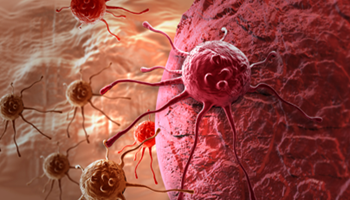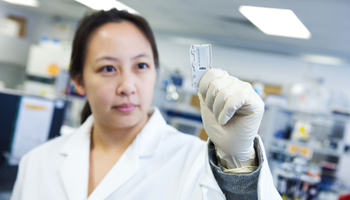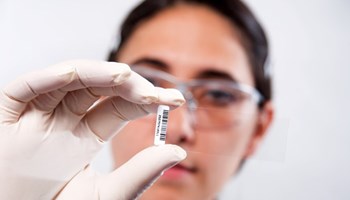First published on the Sysmex Inostics website January 28, 2020 6:15:00 AM. Read the original press release.
Hamburg, Germany and Baltimore, Maryland, 28 January 2020. Pathologist Dr. Vincente Peg of the Vall d´ Hebron University Hospital (Barcelona Spain) and colleagues have presented a correlation between the clearance of circulating tumor DNA (ctDNA) in HER2-positive or triple-negative breast cancer patients undergoing neoadjuvant treatment with a clinical/pathologic complete response at the American Association for Cancer Research (AACR) Advances in Liquid Biopsies conference held in Miami, Florida (USA), January 13-16, 2020. The researchers utilized both a SureSeq™ NGS cancer gene enrichment panel (Oxford Gene Technology, a Sysmex Group Company) for identifying lead mutations from breast cancer FFPE tissue, and Sysmex Inostics’ SafeSEQ personalized liquid biopsy platform for patient-specific longitudinal analysis of plasma ctDNA.
Neoadjuvant therapy to reduce tumor size prior to surgical resection is common in the treatment of early stage breast cancer. However, there exists an unmet clinical need to distinguish those patients with residual disease after neoadjuvant therapy (NAT) from those who achieved complete response in order to better understand which patients are appropriately suited for surgery. Researchers from Vall d´Hebron deployed SureSeq NGS testing to identify driver mutations in breast cancer biopsy tissue of 29 patients with early stage disease. The mutations detected with SureSeq were subsequently followed in the plasma of patients with the SafeSEQ ultrasensitive personalized ctDNA platform to complement radiographic assessment and provide more detailed information on an individual’s response to NAT.
Of 29 Stage II and Stage III triple-negative and HER2-positive breast cancer patients examined in the study, 20 (69%) had TP53 or PIK3CA tissue mutations identified by SureSeq with 17 out of 20 (85%) patients having detectable mutations with SafeSEQ in plasma samples prior to initiation of NAT. Longitudinal plasma analysis conducted at treatment mid-point and post-treatment immediately prior to surgery demonstrated the absence of ctDNA following NAT was observed in all patients (12/12) showing a complete clinical response. However, ctDNA was detected in 3 out of 5 (60%) of patients who did not achieve complete clinical response suggesting that ctDNA testing - alongside of imaging - is an important clinical parameter to consider when determining complete response to neoadjuvant treatment.
“This study addresses the unmet need to de-escalate surgery in patients with no sign of disease.” Dr. Vicente Peg commented. “How can we avoid surgically removing something that is just not there? Circulating tumor DNA by itself is able to detect 85% of patients that achieve pathologic complete response; however, when combined with imaging we can identify 100% of patients. These findings are an important first step to showing that we can accurately identify those patients who may avoid unnecessary surgery.”
Ciriaco, N., Zamora, E. and Peg, V. et al. AACR Advances in Liquid Biopsy Conference 2020 Poster session B January 15, 2020. Clearance of ctDNA in triple-negative and HER2-positive breast cancer patients during neoadjuvant treatment is correlated with pathological complete responses, Poster B63.
About OGT
OGT, a Sysmex Group company, is a leading global provider of clinical and diagnostic genomic solutions that are created for scientists by scientists - including CytoCell®, CytoSure® and SureSeq™ ranges of FISH, microarray and NGS products. The company is dedicated to creating products that enable researchers and clinical decision makers to reach the right care decisions for each patient, every time. OGT strives to unlock the future of genetic clinical care with a commitment to working in partnership with its customers - not only by sharing its expertise of 25 years at the forefront of genetic endeavour, but also by working closely with scientists to understand their unique challenges, and to customise its approach to meet their exact needs. Dedicated to improving clinical care, OGT believes that through partnership—together—we’ll achieve more.
For more information on the Company, please visit our website at ogt.com
CytoSure®, SureSeq™ and myProbes®: For Research Use Only, not for use in diagnostic procedures. CytoCell: Some products may not be available in your region.
About Sysmex Corporation
Sysmex Corporation is a world leader in clinical laboratory systemization and solutions, including laboratory diagnostics, laboratory automation and clinical information systems. Serving customers for more than 50 years, Sysmex focuses on technological leadership in diagnostic science and information tools that make a difference in the health of people worldwide. The company is also exploring emerging opportunities in the life science field. Its R&D efforts focus on the development of high-value-added testing and diagnostic technologies that are innovative, original and optimize individual health. Sysmex also seeks to leverage its state-of-the-art technologies for cell, gene and protein analysis. The company, headquartered in Kobe, Japan, has subsidiaries in North America, Latin America, Europe, the Middle East, Africa, China and Asia Pacific and employs more than 9,000 employees worldwide. Sysmex Corporation is listed in the top tier of the Tokyo Stock Exchange.
For more information about Sysmex Corporation and its affiliate companies, please visit www.sysmex.co.jp/en/.

Launch of two NGS panels enables comprehensive detection of genetic abnormalities involved in breast and ovarian cancer, and myeloid disorders.
Read
In the workshop users will explain how OGT’s SureSeq™ NGS panels can increase throughput and save time and cost in the detection of a wide variety of aberrations.
Read
New content and Interpret NGS analysis software detection capabilities include BCR-ABL and KMT2A-PTD detection.
Read